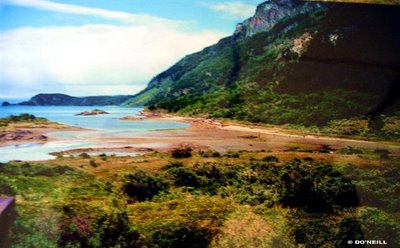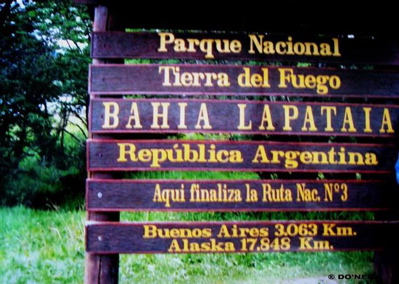Antarctica 1: A prelude to avians of Antarctica


It is quite difficult to begin writing an article about the white continent Antarctica, for there are so many topics that can be had and one just wouldn’t know where to begin.
From an ornithologist, marine biologist, botanist, geologist, surveyor, research scientist, environmentalist, naturalist, conservationist, photographer, artist, historian, travel journalist and tourist’s point of view, each has a marvellous contribution to impart… the mysteries of Antarctica to our disintegrating and restless world we live in.
I decided perhaps it is best to write and let readers visualise this seventh continent from a bird’s eye view (be like a bird) thus enabling me to share my experience a bit more than dwelling primarily on oceanic birds that roam the Southern Ocean; and do justice to this inhospitable… yet alluring place and where species of penguins spend breeding during their summer holidays.
 My journey began in Ushuaia pronounced ‘oo-shuay-yar’ - world’s southern most capital city (Lat 54S, Long 68S) of Tierra del Fuego, Patagonian state of S. America (above). This small, booming touristy city is gateway to all cruise ships embarking on a 1000km voyage - a journey crossing the coldest (-40º to -70ºC), windiest (72km/hr), driest (<5cm rainfall), densest water (freezing point -1.8ºC) on earth and >3000 m deep, the Antarctic Ocean.
My journey began in Ushuaia pronounced ‘oo-shuay-yar’ - world’s southern most capital city (Lat 54S, Long 68S) of Tierra del Fuego, Patagonian state of S. America (above). This small, booming touristy city is gateway to all cruise ships embarking on a 1000km voyage - a journey crossing the coldest (-40º to -70ºC), windiest (72km/hr), driest (<5cm rainfall), densest water (freezing point -1.8ºC) on earth and >3000 m deep, the Antarctic Ocean. 

With 24 hours to spare before embarkation, I took precious moments to bird watch along the seafront. Three species of gulls were identified with the help from my guide book companions - Tito Narosky and Dario Yzurieta, for after a while I was able tell the difference between a Kelp (Larus dominicanus) (below), Dolphin (Leucophaeus scoresbii) and Brown-hooded Gull (Larus maculipennis).
 Trotting along pebbled beach, covered with a carpet of slimy green looking algae was the only way to get close views of the Magellanic Oystercatcher (Haematopus leucopodus) and the Blackish Oystercatcher (H. ater) with 8x42 binoculars held over thick layer of gloves. I had to admit the raw, iodised odour emitting from those kelp washed ashore, reminded me of my first authentic bowl of Japanese miso soup. Yuk!
Trotting along pebbled beach, covered with a carpet of slimy green looking algae was the only way to get close views of the Magellanic Oystercatcher (Haematopus leucopodus) and the Blackish Oystercatcher (H. ater) with 8x42 binoculars held over thick layer of gloves. I had to admit the raw, iodised odour emitting from those kelp washed ashore, reminded me of my first authentic bowl of Japanese miso soup. Yuk!  The gusty Westerly winds sent my body to a shudder and teeth chattering. I had to dash for warmth under a disused shed in spite of several layers of clothing worn. How I envied the Rock Cormorant or Rock Shag (Phalacrocorax magellanicus) perched on an abandoned ship under a mid-December summer of mean annual temperature of 5.5ºC, while his cousin the Neotropic Cormorant (Phalacrocorax olivaceus) was skimming happily along the waterline of the Beagle Channel!
The gusty Westerly winds sent my body to a shudder and teeth chattering. I had to dash for warmth under a disused shed in spite of several layers of clothing worn. How I envied the Rock Cormorant or Rock Shag (Phalacrocorax magellanicus) perched on an abandoned ship under a mid-December summer of mean annual temperature of 5.5ºC, while his cousin the Neotropic Cormorant (Phalacrocorax olivaceus) was skimming happily along the waterline of the Beagle Channel!Just when those freezing winds decided to die, a loud rattle ‘ke-kekeke’ flew in and announced their identity to be that of a pair of migratory Ringed Kingfishers (Megaceryle torquata) from Mexico. Their heads and backs were a sky blue grey with contrasting white underwings and undertails. The rest of underparts were rufous with female having a broad band matching colour to the back and a white demarcation line across the lower chest. It was a heart warming sight to see this lifer pair of 40 cm and known to fly in twos, frolicking on the wooden gate displaying their erected grey crests.
Walking up further towards the airport road, I kept my eyes locked along the shoreline to view small flocks of White-rumped Sandpipers (Calidris fuscicollis) and Pectoral Sandpipers (Calidris melanotos). A flock of Magellanic Plovers (Pluvianellus socialis) feeding along the mudflats caught my attention with their reddish eyes and feet while terns, impossible to tell the difference, remained airborne with undulating flights of Sooty Shearwaters (Puffinus griseus) diving for fish.
Finally, I headed towards a huge pond. I was rewarded with more lifers - Silver Teal (Anas versicolor) recognised from the Speckled Teal (Anas flavirostris) by its bluish bill with yellow base.
With 17 summer daylight hours and in a day where four seasons can possibly be seen, I could go on and on if only it wasn’t that chilling cold. Although I was almost mummified by my headscarf, I was rather pleased to chalk up a total of 23 lifers.
This self-learning and birding on the ‘go with backpack’ had to come to an end as my stomach was groaning for ‘Big Macs’ round the corner. A surprised bonus awaited me by my first sighting of a South America raptor - a Crested Caracara (Polyborus plancus). He was seen perched near the roadside, long enough to admire a demure, blackish plumaged bird with black barring on the back and breast and with ochraceous throat.
 Next morning, I joined a coach tour to visit Patagonian only coastal National Park - ‘Parque Nacional Tierra Del Fuego’ (63,000 ha) where the Upland Goose (Chloephaga picta) and Ashy-headed Goose (Chloephaga poliocephala) live and the hope, to catch a rare glimpse of the elusive, Magellanic Woodpecker (Campephilus magellanicus). Instead, I was rewarded with exciting shouts from the bus driver, who sent his vehicle to a screeching halt and pointed to the sky, directing us to view the king of the Andes- a pair of Andean Condors (Vultur gryphus).
Next morning, I joined a coach tour to visit Patagonian only coastal National Park - ‘Parque Nacional Tierra Del Fuego’ (63,000 ha) where the Upland Goose (Chloephaga picta) and Ashy-headed Goose (Chloephaga poliocephala) live and the hope, to catch a rare glimpse of the elusive, Magellanic Woodpecker (Campephilus magellanicus). Instead, I was rewarded with exciting shouts from the bus driver, who sent his vehicle to a screeching halt and pointed to the sky, directing us to view the king of the Andes- a pair of Andean Condors (Vultur gryphus). This is the largest American vulture species – standing 95cm tall with a 2-3 m wingspan that look like wings of Wright Brothers’ early jet planes. The ugliness beauty of this mountain living bird can be described as a baldy headed, black plumaged bird that wears a donut looking white feathered collar, round a naked neck. This ‘Prince of Carrion’ glides majestically in high altitudes with ease and nests on inaccessible high rocks along the Patagonian coastline.
 Imagine flying like the Andean Condor, how enchanting from a bird’s eye view to see snow-capped Andean mountains, with holiday skiers looking like moving dots on melting sundae cones. Sheep grazing on flat northern lands of Patagonia, and the rugged south of thick Andean-Patagonian forests and steppe areas that embrace over 500 species of flowering plants, 400 species of mosses and 30 species of ferns and be mesmerised by deciduous foliages that riot in autumn colours.
Imagine flying like the Andean Condor, how enchanting from a bird’s eye view to see snow-capped Andean mountains, with holiday skiers looking like moving dots on melting sundae cones. Sheep grazing on flat northern lands of Patagonia, and the rugged south of thick Andean-Patagonian forests and steppe areas that embrace over 500 species of flowering plants, 400 species of mosses and 30 species of ferns and be mesmerised by deciduous foliages that riot in autumn colours. Fly through alternating deep valleys, rivers, peat bogs, spectacular coastlines of glaciers and lakes - haven to anglers admiring you from below and pay a visit to various species of birds, marine mammals, crustaceans, and colonies of Magellanic Penguins (Spheniscus magellanicus) living along the rugged coastline and the list goes on…
Bringing one down to earth again would mean finding oneself in a touring coach, sticking one’s head out of coach windows to gaze one more time at the wonders of parasitic fungus – Pan del Indio (Indian bread) which grows on the beech trees and ‘Barba de Viejo’ (Old man’s beard) which attaches itself to trees.
 The coach left behind an enchanting world – an ideal world for the makings of a romantic poet as it rolled towards the pier. Greeted by rows of pink and purple lupins (Lupinus) (above), passengers alighted and headed towards the embarkation hall to begin another journey - a journey to cruise the Southern Ocean and visit Antarctica – the white continent.
The coach left behind an enchanting world – an ideal world for the makings of a romantic poet as it rolled towards the pier. Greeted by rows of pink and purple lupins (Lupinus) (above), passengers alighted and headed towards the embarkation hall to begin another journey - a journey to cruise the Southern Ocean and visit Antarctica – the white continent.SUBMITTED BY: DAISY O’NEILL, PENANG, MALAYSIA.
Labels: Travelogue



0 Comments:
Post a Comment
<< Home